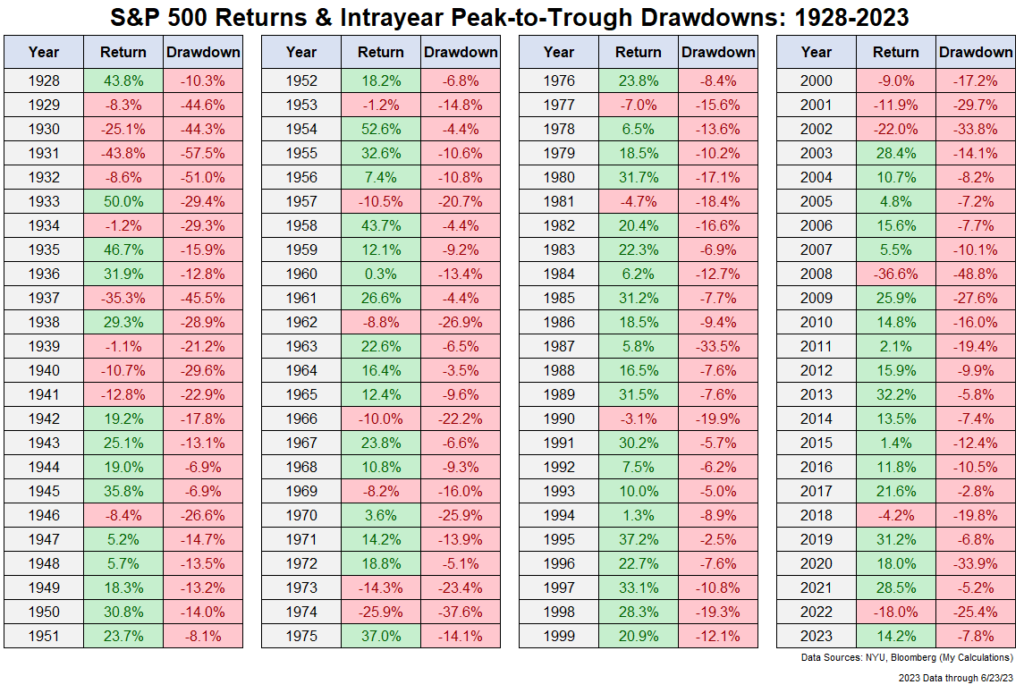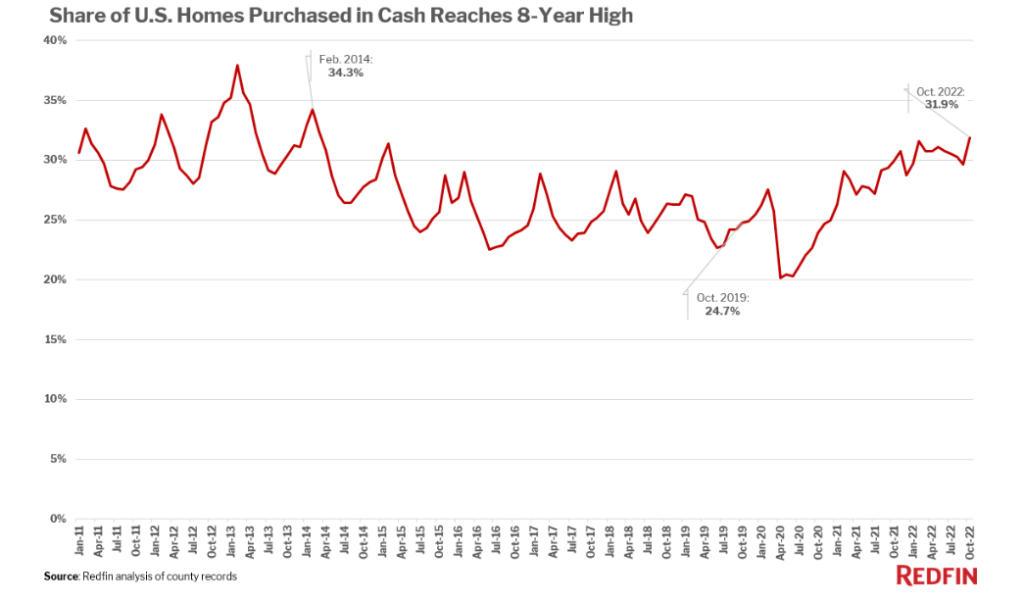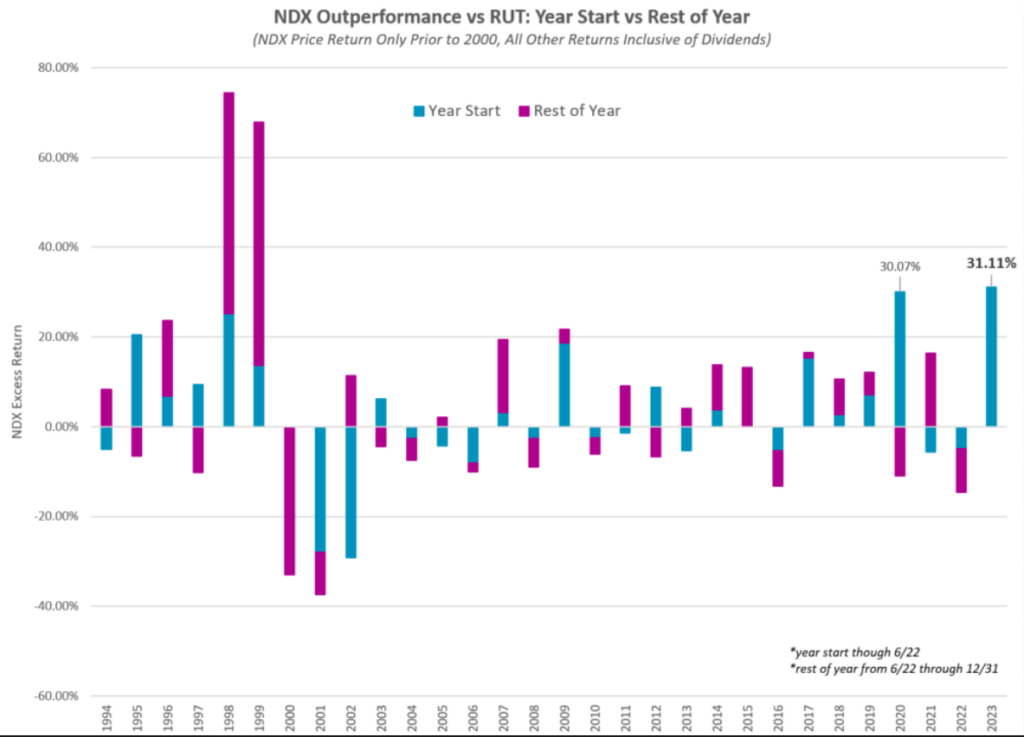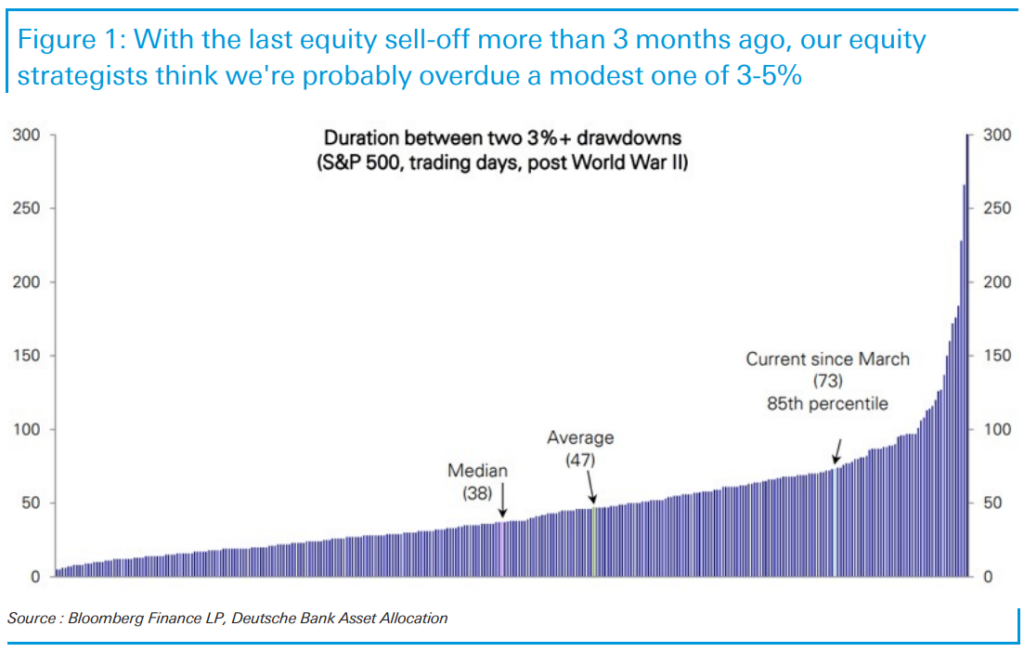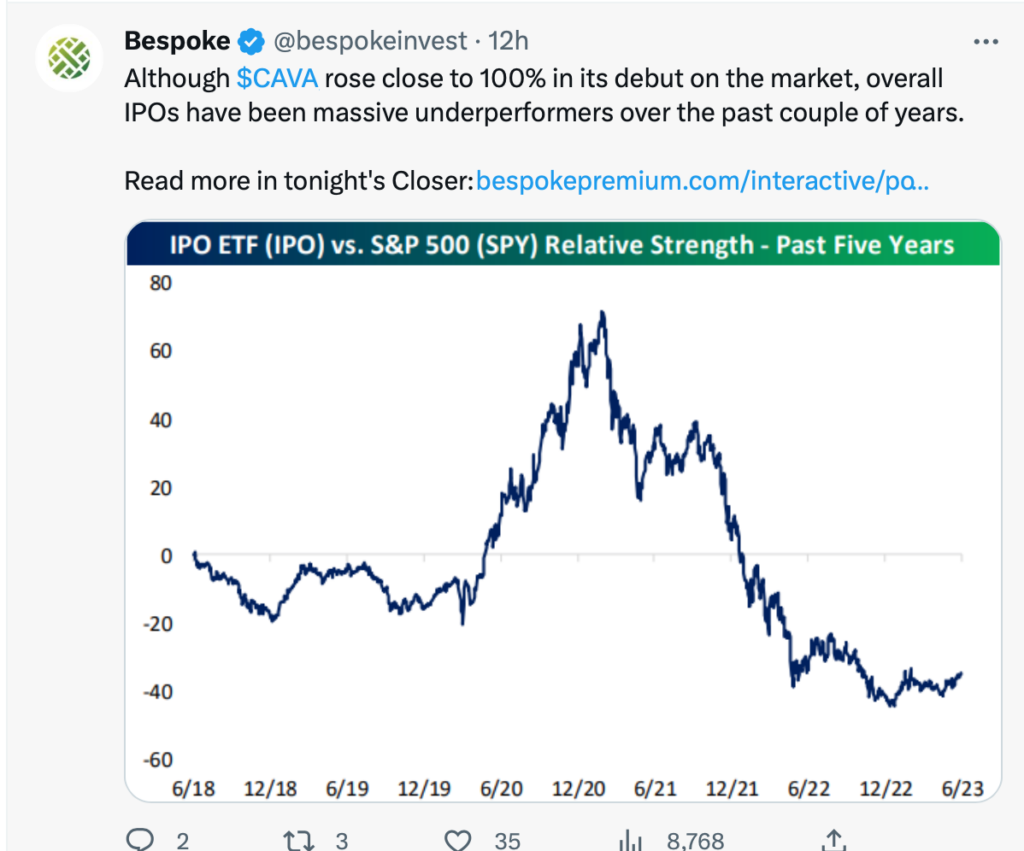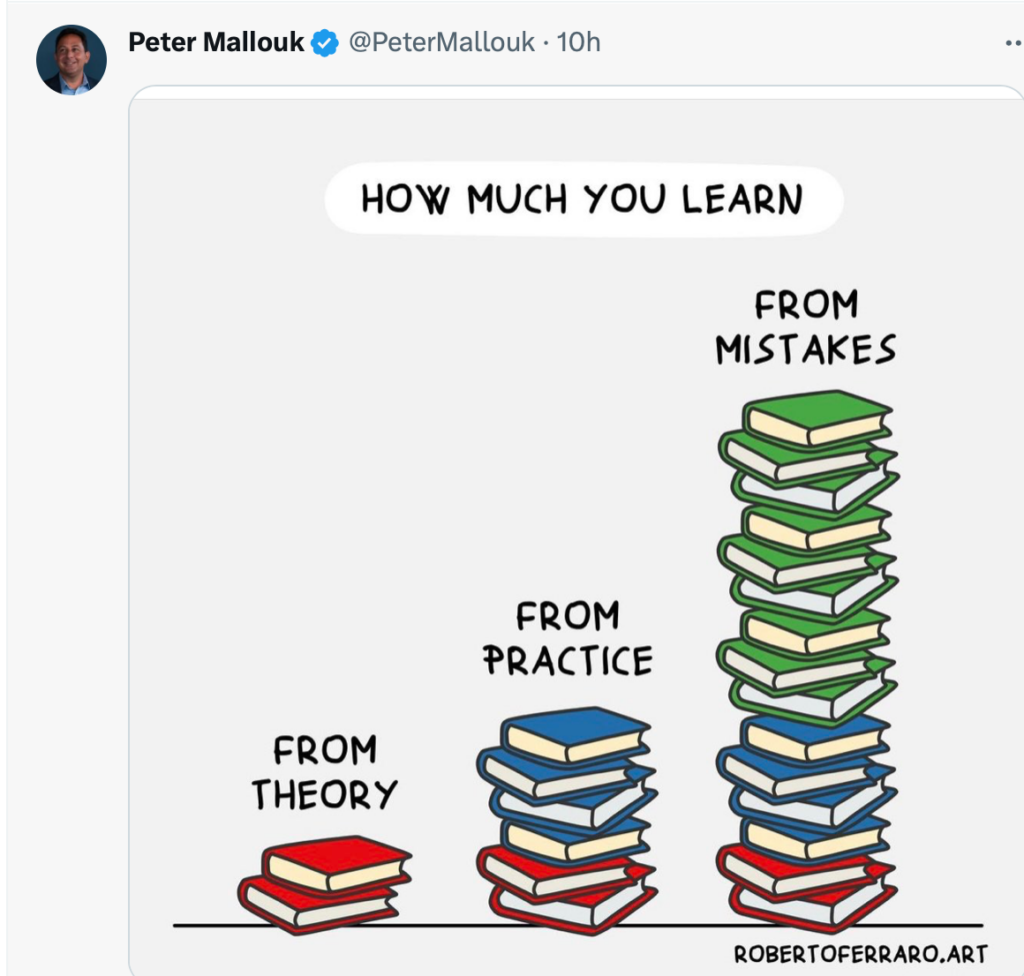1. OPEC Keeps Lowering the Supply of Oil but Prices Keep Moving Down
In theory, supply goes down and prices go up, but not happening….cheaper Summer driving season.

2. Natural Gas Prices Bouncing Around Lows Leading to Cheap Utility Bills for Summer

WSJ Ryan Dezember
3. Bank Deposits to Money Markets
Blackrock Insights

https://www.blackrock.com/us/individual/insights
4. High Net Worth Stashing Money in Cash at Higher Rate
Marketwatch Here’s a breakdown of the numbers: HNWI individuals stored 34% of their wealth in cash and cash equivalents in 2022, up 10 percentage points from 24% during the prior year, according to Capgemini’s annual wealth report, which was released this month. It’s also 20 percentage points lower than the 14% stored in cash and cash equivalents in 2006, a couple of years before the Great Recession. What’s more, cash is expected to remain high — along with interest rates. “We’ve never seen this before — banks are sitting on tons of cash, sitting idle, waiting for the right opportunity,” Elias Ghanem, global head of Capgemini Research Institute for financial services, told MarketWatch. “The amount of money held in cash has never been so high, and the jump year-over-year has never been so high. They’re putting their money into short-term cash allocation, checking accounts, savings accounts, and CDs.”

5. Used Truck Prices Post-Covid Correction

6. Age of Cars on Road

7. The State of Economic Freedom

https://www.visualcapitalist.com/economic-freedom-map-2023/
8. July 4th Travel Record 2023
Zerohedge

https://www.zerohedge.com/commodities/record-number-americans-forecasted-travel-july-4th-weekend
9. Airnub Revenues by City

https://twitter.com/nickgerli1
10. The Courage to Stand Out: Sam Zell’s Contrarianism Neckar Substack
The Courage to Stand Out: Sam Zell’s Contrarianism
“So what do you do?” I replied, “I’m a professional opportunist.” And that has been my response to that question ever since.
Sam Zell was a bit of a rascal. In 2007, when the legendary investor agreed to sell his Equity Office REIT to Blackstone, he was not allowed to solicit competing bids. But as Zell, who recently passed away, recounted in Am I Being Too Subtle?, he “sure as hell wasn’t going to discourage one if it was out there.”
So, he emailed an old buddy, real estate magnate Steve Roth of Vornado, who “had been circling around the idea of a purchase for some time.” Zell didn’t ask for a bid. He just shared a little poem:
Dear Stevie:
Roses are red
Violets are blue
I heard a rumor
Is it true?
Love and kisses,
Sam
Cheeky. After some back and forth, Zell happily sold to Blackstone. Just at a higher price. Anecdotes like this one make his story endearing. Zell got rich, walked his own path, and had fun.
People often ask me, “When are you going to retire?” And I answer, “Retire from what?” I’ve never worked a day in my life.
Zell struck me as an archetype for a capital cycle investor. While he’s best known for his work in real estate, Zell was much more flexible and truly a ‘professional opportunist.’
I am opportunistic. Sometimes I am a buyer, sometimes a seller. Sometimes I’m an equity investor, and sometimes I focus on debt. Often both. I never let my affinity for any one industry or my love of doing deals dictate my actions.
Keeping it simple.
Zell was a contrarian (“conventional wisdom is nothing but a reference point”) and keen observer of cycles. And he liked to keep it simple.
When I took Econ 101 at the University of Michigan, I walked into the first class, and written on the blackboard was “supply and demand.” I have to be honest with you, I’m not sure that there was ever anything else in Econ 101 that I learned that was relevant. If you understand and are focused on how supply and demand affects pricing, how it affects decision-making, how it affects risk — it’s the governing principle of everything, but it’s also simple.
His journey started with acquiring and developing apartment buildings in smaller markets, primarily college towns, where he encountered less competition and saw high returns. When he observed signs of a major construction and lending boom, he sold his holdings and waited for the market to turn before scooping up distressed properties.
He described many of his bets as ‘micro in the macro,’ individual properties or companies within a thematic insight. Zell took advantage of the bust in junk bonds with the same philosophy that led him to trailer parks and companies with large tax loss carryforwards.
I stay true to the fundamental truths: the laws of supply and demand; liquidity equals value; limited competition; long-term relationships.
We believed the real money in real estate came from borrowing long-term, fixed-rate debt in an inflationary scenario that ultimately depreciated the value of the loan and increased the position of the borrower.
His success rested on a combination of thematic insights, timing, and an ability to execute. Labeling him merely a contrarian misses the point. To paraphrase Seinfeld, anyone can see the opportunity. What counts is the ability to execut
The successful contrarian has to:
- Observe the playing field and understand what expectations are priced in;
- Develop a variant perception when price diverges substantially from value;
- Have the courage to diverge from herd (miss out on near-term opportunities, possibly shut down lines of business);
- Create conditions that allow her to diverge from the herd (sufficient cash flow, liquidity reserves);
- Act during a limited window of opportunity; be able to source deals, raise capital under adverse conditions, and turn around underperforming assets.
Zell acquired his moniker ‘grave dancer’ after writing about the downturn in real estate. But really what he did throughout his career was to dance with market cycles, the ebb and flow of liquidity and opportunity. Zell was an astute observer of markets, but equally important was his ability to build lasting partnerships and persuasiveness.
Grave dancing involves confidence, optimism, conviction, and no small amount of courage. All the opportunity in the world means nothing if you don’t actually pull the trigger.
So, what worked for Zell?
- Discipline (“suffering from knowing the numbers”).
- Keen observer of change.
- Speed of execution.
- Closing deals by solving problems.
- Turning being an outsider into an advantage.
In addition, we can observe many of the markers in From Predators to Icons in his story, including a family business, early sales experiences, networks of mentors and allies, a strong education, and even family money.
 The remainder of this post and the opportunity to reflect, share, and discuss in the comments are reserved for the community of subscribers. If you would like to support my work and join the conversation, consider subscribing.
The remainder of this post and the opportunity to reflect, share, and discuss in the comments are reserved for the community of subscribers. If you would like to support my work and join the conversation, consider subscribing.
https://neckar.substack.com/p/the-courage-to-stand-out-sam-zells
Found at RealClear Markets https://www.realclearmarkets.com/


